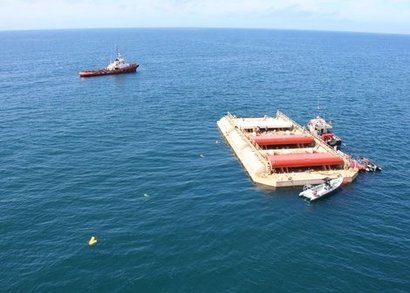
Breaking News
FULL REPLAY: President Trump Delivers an Address to the Nation - 12/17/25
 MELANIA, the film, exclusively in theaters worldwide on January 30th, 2026.
MELANIA, the film, exclusively in theaters worldwide on January 30th, 2026.
Top Tech News
 This tiny dev board is packed with features for ambitious makers
This tiny dev board is packed with features for ambitious makers
 Scientists Discover Gel to Regrow Tooth Enamel
Scientists Discover Gel to Regrow Tooth Enamel
 Vitamin C and Dandelion Root Killing Cancer Cells -- as Former CDC Director Calls for COVID-19...
Vitamin C and Dandelion Root Killing Cancer Cells -- as Former CDC Director Calls for COVID-19...
 Galactic Brain: US firm plans space-based data centers, power grid to challenge China
Galactic Brain: US firm plans space-based data centers, power grid to challenge China
 A microbial cleanup for glyphosate just earned a patent. Here's why that matters
A microbial cleanup for glyphosate just earned a patent. Here's why that matters
 Japan Breaks Internet Speed Record with 5 Million Times Faster Data Transfer
Japan Breaks Internet Speed Record with 5 Million Times Faster Data Transfer
 Advanced Propulsion Resources Part 1 of 2
Advanced Propulsion Resources Part 1 of 2
 PulsarFusion a forward-thinking UK aerospace company, is pushing the boundaries of space travel...
PulsarFusion a forward-thinking UK aerospace company, is pushing the boundaries of space travel...
 Dinky little laser box throws big-screen entertainment from inches away
Dinky little laser box throws big-screen entertainment from inches away
 'World's first' sodium-ion flashlight shines bright even at -40 ºF
'World's first' sodium-ion flashlight shines bright even at -40 ºF
WaveRoller sea-floor generator approaches commercial deployment

Finland's AW Energy is preparing to field a contender at scale – the Waveroller – which sits on the sea bed generating up to 1 MW.
Wave power does not seem to be a super fast-moving sector. We've seen plenty of fascinating ideas in this space, from jetty-mounted pump arms, to telescoping barrels, to elastic sea-bed flappers, and two different flavors of artificial blowhole generators, to name just a few, but nearly all remain at a pilot/prototype stage.
Which is annoying; wave energy is super-reliable, super-predictable, and available 24/7 at coastlines worldwide, which is right where a lot of people tend to like living. It should be a dream addition to the renewable energy mix. But it's moving so slowly that you have to wonder where the holdup is.
The idea behind the Waveroller struck when a diver noticed a large hatch on a shipwreck moving back and forth with considerable power as waves passed over it, and wondered if the same "surge" effect, which causes water particles to move back and forth in horizontal elliptical shapes close to the shore, could be harnessed to drive a hydraulic piston and generate electricity.
That light bulb moment was in 1993, when Michael Jordan was cementing Charles Barkeley's legacy as a ringless wonder in the NBA Finals, and The Simpsons was hitting its stride in season five. We're talking "who needs a Quickie-Mart" and Homer joining a barbershop quartet. That long ago.
It took until 1999 to test a proof of concept, then until 2005 before small-scale test farms were installed in Scotland and Ecuador, then until 2016 to get a design manufactured, assembled, tested and certified around Europe. The first commercial WaveRoller, a 350-kW unit, was connected to the grid in 2019, 800 m (2,600 ft) off the Portuguese coast at Peniche. Here it is, brand spankers, being towed out and deployed.

 The Prime Directive is Evil
The Prime Directive is Evil
 Don't Worry About Bitcoin
Don't Worry About Bitcoin

